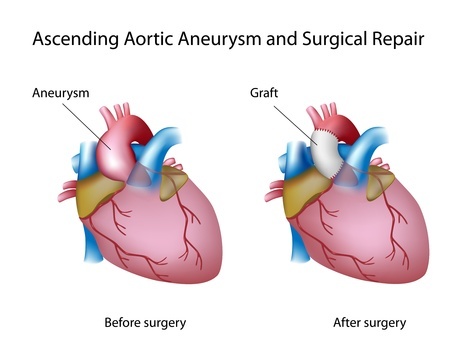Levaquin Fluoroquinolone Antibiotics and Aortic Aneurysm

Recent studies suggest that Levaquin and other fluoroquinolone antibiotics may be associated with an increased risk of aortic aneurysm. It appears that fluoroquinolone manufacturers have not warned patients or doctors about this potentially deadly complication.
Legal Reviews for those Harmed by Fluoroquinolone Antibiotics
Bernstein Liebhard LLP is offering free legal reviews to patients who experienced an aortic aneurysm within a year of taking Levaquin or another fluoroquinolone antibiotic. To learn more about filing a Levaquin lawsuit or other fluoroquinolone aortic aneurysm case, please contact Bernstein Liebhard LLP at (888) 994-5118.
Fluoroquinolone Antibiotics: What’s the Problem?
Fluoroquinolone antibiotics are used to treat a wide range of bacterial infections, including pneumonia, sinus infections, urinary tract infections, cellulitis, gastroenteritis, bone and joint infections, bronchitis, and some sexually transmitted diseases. Medications in this class include:
Fluoroquinolones have been associated with collagen degradation. This occurrence can cause other complications, including tendon ruptures, which are known to occur in patient taking the antibiotics. Collagen degradation may also damage the lining of the aorta, the largest blood vessel in the body.
Levaquin Aortic Aneurysm Lawsuit Filed in Florida Federal Court
A Florida man has become one of the first plaintiffs in the country to bring an aortic aneurysm lawsuit against the manufacturer of Levaquin. The case, which was filed on June 8th in the U.S. District Court, Middle District of Florida, claims that two courses of Levaquin prescribed to the plaintiff in December 2007 and January 2008 resulted in a host of side effects, including an aortic aneurysm that required surgery. Read More
Research on Fluoroquinolones and Aortic Aneurysm
Several recent studies suggest that patients treated with a fluoroquinolone antibiotic may be at risk for aortic aneurysm, a dangerous complication that can result in fatal internal bleeding.
- October 2015: A study published in JAMA: Internal Medicine indicated that fluoroquinolone antibiotics were associated with an approximately 2-fold increase in the risk of aortic aneurysm within 60 days of exposure. The study drew data from pool of 1,477 patients hospitalized for aortic aneurysm or aortic dissection from 2000 through 2011. Each of those cases was compared to 100 controls who were not hospitalized for these complications. “Clinicians should continue to be vigilant for the appearance of aortic aneurysm and dissection in high-risk patients treated with fluoroquinolones,” the study authors cautioned. Read More
- November 2015: A paper authored by Canadian researchers in the British Medical Journal reported that patients using fluoroquinolone antibiotics might face a three-fold increase risk of aortic aneurysm. Of the 1.7 million patients involved in the study, a third had received a fluoroquinolone. “Reducing unnecessary fluoroquinolone treatments or prolonged treatment courses might have possibly prevented more than 200 aortic aneurysms in this population,” study authors said.
Symptoms of Aortic Aneurysm
An aortic aneurysm is a bulge or type of ballooning that occurs when the aortic wall weakens. If the weakened area bursts, a victim may experience fatal internal bleeding. Unfortunately, an aortic aneurysm can grow slowly, with very few symptoms. However, some symptoms may present if the aneurysm expands and puts pressure on surrounding organs.
Symptoms of an aortic aneurysm will depend on its location. Patients with an abdominal aortic aneurysm may experience:
- Pain in the chest, abdomen, lower back, or flank that could spread to the groin, buttocks, or leg. The pain may last for hours or days, and it may be deep, aching, gnawing, and/or throbbing.
- A pulsating sensation in the abdomen.
- If an abdominal aortic aneurysm results in a blood clot that breaks free and travels to the leg, victims may experience the sensation of a “cold foot,” or a painful toe that is black and blue.
- An inflammatory aortic aneurysm may cause fever or weight loss.
Symptoms of a thoracic aortic aneurysm may include:
- Chest pain
- Back pain
- Cough or shortness of breath
- Hoarseness
- Difficulty or pain while swallowing
A ruptured aortic aneurysm will cause:
- Severe pain
- Extreme drop in blood pressure
- Signs of shock
A ruptured aortic aneurysm requires immediate medical attention to prevent the death of the patient.
Our Attorneys are Ready to Assist Victims of Levaquin Fluoroquinolone Side Effects.
The attorneys at Bernstein Liebhard LLP are ready to provide legal assistance to anyone who suffered an aortic aneurysm that could be associated with Levaquin or another fluoroquinolone antibiotic. To contact our legal team today, please call (888) 994-5118.
- FDA (2015) “Fluoroquinolone Antimicrobial Drugs Information” http://www.fda.gov/Drugs/DrugSafety/InformationbyDrugClass/ucm346750.htm
- JAMA Internal Medicine (2015) “Risk of Aortic Dissection and Aortic Aneurysm in Patients Taking Oral Fluoroquinolone” http://archinte.jamanetwork.com/article.aspx?articleid=2451282
- BMJ (2015) “Fluoroquinolones and collagen associated severe adverse events: a longitudinal cohort study” http://bmjopen.bmj.com/content/5/11/e010077.full
- Web MD (2014) “Aortic Aneurysm-Symptoms” http://www.webmd.com/heart-disease/tc/aortic-aneurysm-symptoms
Get the latest news and litigation updates about this case by following us on Facebook. Click the "Like" button below.
Follow Us


